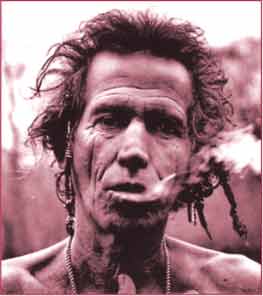PA'S MALACCA (MELAKA) TRAVEL GUIDE
The long running slogan “Malaysia truly Asia” has successfully wooed tourists to the beaches and shopping malls of modern Malaysia which seems well on its way to becoming the developed country envisaged by Prime Minister Mohammed Mathir when he came to power in the early 1980s. As a resident in Indonesia; I am often impressed by the cleanliness, discipline and general honesty that tourists in Malaysia experience; by comparison. Indonesians blame the Dutch; making absurd comparisons with the British colonial experience; but It’s time they blamed themselves if their country squares up poorly to their more affluent neighbours. Brochures are fond of saying that if you want to learn about Malaysia’s future have a look at Kuala Lumpur but if you want to see its past then visit Malacca, once the largest emporium in the orient, “truly Asia” with a lot Portuguese, Dutch and British influences thrown in as well.
Two hours from Kuala Lumpur and around four hours by bus from Singapore’s Lavender Street bus terminal, or an even quicker and easier drive by car from both; Malacca is well worth a visit.
The main sights center around the old Dutch building, the Stadthuys, which was once the official residence of Dutch governors. Built in 1650 and preserved in its original structure and form, it houses the historical, ethnographic & literature museums, which have some interesting exhibits for enthusiasts of the history and relics of the Malay Archipelago. Opposite the Stadthuys, is the 1753 Dutch built Christ church and nearby, you can climb up to the ruins of St Paul’s church which was originally built by the Portuguese in the 16th century.
A view of Malacca Town Square from Christ Church

Bukit St Paul and the ruins of St Paul's Church

Old tombstones stand around the interior of St Paul's Church

Malacca's Maritime Museum


Malacca’s Chinatown is the city’s main attraction, and the old Heeren Street (now Jl. Tun Tan Cheng Lock after the leader of the Malaysian Chinese association) was once home to the Dutch elite and then rich Chinese traders. It is still known as “millionaires’ row” today and the street is lined with some fine old Peranakan (straits Chinese) homes and shop houses. The excellent Baba Nyonya Heritage Museum is located in in a traditional Peranakan townhouse and offers a fascinating look at the life and culture of the prosperous Malaccan Chinese in the neighborhood’s heyday.
Cheng Hoon Teng temple in Chinatown

Forget Malacca’s few five star resort hotels and head for Jl Tun Tan Cheng Lock, where old peranakan homes and former warehouses have been converted into comfortable hotels and guest houses. The hotel Puri is and excellent and delightful choice, standard rooms start at RM110++ including a buffet breakfast for two (western toast and eggs or Malaysian Nasi lemak and teh tarik). The hotel’s courtyard is a great hang out place with equally good food served. The hotel’s interior is also home to nesting swallows; the nests will presumably end up in the much sought after Chinese soup. The Baba House is another popular choice for accommodation.
Swallows nesting at the Hotel Puri

Malacca is also a good place to eat, most of the guidebooks recommend Medan Portugis, the home of Malacca’s Portuguese descendants, and in particular the mediocre Restoran de Lisbon, however getting back into the city is a hassle since it’s a long walk to the main road and then a long wait for a taxi to take you 3 km back in to the city. Capitol Satay on Lorong Bukit China is one of Malacca’s most popular eateries; it can be hard to get in, especially on weekend evenings when families are queuing out on the street for a table. Harper’s on Lorong Hang Jebat is Located in an old Chinatown warehouse, you can enjoy your dinner overlooking the Malacca River, watching fishing boats going back and forth at all hours of the day and night. The chicken curry and cheesecake are particularly good at Harper’s and the historic feel and style of the place, combined with the friendly staff is more than enough to make you want to stay for a while after your dinner and enjoy a few cold tigers.
In the evening, Malacca’s sound and light show attempts to bring to life the city’s ruins with a rather tacky narration, but it’s a good introduction to the history and sights of the city on your first night of arrival.
Besides history, Malacca is also famous for shopping. The night market on Jonker walk (Jalan Hang Jebat) is packed at the weekend selling jewelry in particular, but also pretty much everything else and the influx of visitors from KL and Singapore, especially at weekends, probably makes it Malacca’s number one tourist attraction. Jonker walk is also home to some of Malacca’s more interesting Chinese temples and a haven for traditional Malaysian hawker food such as cendol, rendeng nasi lemak, laksa, mee Penang etc.
With a few days to spare; and in easy reach of Singapore and KL; Malacca is an interesting place for history buffs, anthropologists and anybody.
Two hours from Kuala Lumpur and around four hours by bus from Singapore’s Lavender Street bus terminal, or an even quicker and easier drive by car from both; Malacca is well worth a visit.
The main sights center around the old Dutch building, the Stadthuys, which was once the official residence of Dutch governors. Built in 1650 and preserved in its original structure and form, it houses the historical, ethnographic & literature museums, which have some interesting exhibits for enthusiasts of the history and relics of the Malay Archipelago. Opposite the Stadthuys, is the 1753 Dutch built Christ church and nearby, you can climb up to the ruins of St Paul’s church which was originally built by the Portuguese in the 16th century.
A view of Malacca Town Square from Christ Church

Bukit St Paul and the ruins of St Paul's Church

Old tombstones stand around the interior of St Paul's Church

Malacca's Maritime Museum


Malacca’s Chinatown is the city’s main attraction, and the old Heeren Street (now Jl. Tun Tan Cheng Lock after the leader of the Malaysian Chinese association) was once home to the Dutch elite and then rich Chinese traders. It is still known as “millionaires’ row” today and the street is lined with some fine old Peranakan (straits Chinese) homes and shop houses. The excellent Baba Nyonya Heritage Museum is located in in a traditional Peranakan townhouse and offers a fascinating look at the life and culture of the prosperous Malaccan Chinese in the neighborhood’s heyday.
Cheng Hoon Teng temple in Chinatown

Forget Malacca’s few five star resort hotels and head for Jl Tun Tan Cheng Lock, where old peranakan homes and former warehouses have been converted into comfortable hotels and guest houses. The hotel Puri is and excellent and delightful choice, standard rooms start at RM110++ including a buffet breakfast for two (western toast and eggs or Malaysian Nasi lemak and teh tarik). The hotel’s courtyard is a great hang out place with equally good food served. The hotel’s interior is also home to nesting swallows; the nests will presumably end up in the much sought after Chinese soup. The Baba House is another popular choice for accommodation.
Swallows nesting at the Hotel Puri

Malacca is also a good place to eat, most of the guidebooks recommend Medan Portugis, the home of Malacca’s Portuguese descendants, and in particular the mediocre Restoran de Lisbon, however getting back into the city is a hassle since it’s a long walk to the main road and then a long wait for a taxi to take you 3 km back in to the city. Capitol Satay on Lorong Bukit China is one of Malacca’s most popular eateries; it can be hard to get in, especially on weekend evenings when families are queuing out on the street for a table. Harper’s on Lorong Hang Jebat is Located in an old Chinatown warehouse, you can enjoy your dinner overlooking the Malacca River, watching fishing boats going back and forth at all hours of the day and night. The chicken curry and cheesecake are particularly good at Harper’s and the historic feel and style of the place, combined with the friendly staff is more than enough to make you want to stay for a while after your dinner and enjoy a few cold tigers.
In the evening, Malacca’s sound and light show attempts to bring to life the city’s ruins with a rather tacky narration, but it’s a good introduction to the history and sights of the city on your first night of arrival.
Besides history, Malacca is also famous for shopping. The night market on Jonker walk (Jalan Hang Jebat) is packed at the weekend selling jewelry in particular, but also pretty much everything else and the influx of visitors from KL and Singapore, especially at weekends, probably makes it Malacca’s number one tourist attraction. Jonker walk is also home to some of Malacca’s more interesting Chinese temples and a haven for traditional Malaysian hawker food such as cendol, rendeng nasi lemak, laksa, mee Penang etc.
With a few days to spare; and in easy reach of Singapore and KL; Malacca is an interesting place for history buffs, anthropologists and anybody.
Labels: Travel















